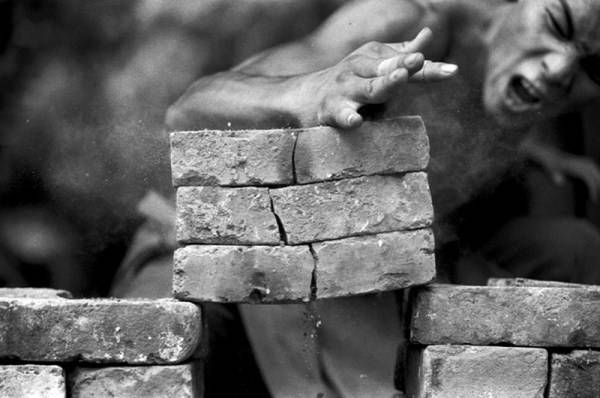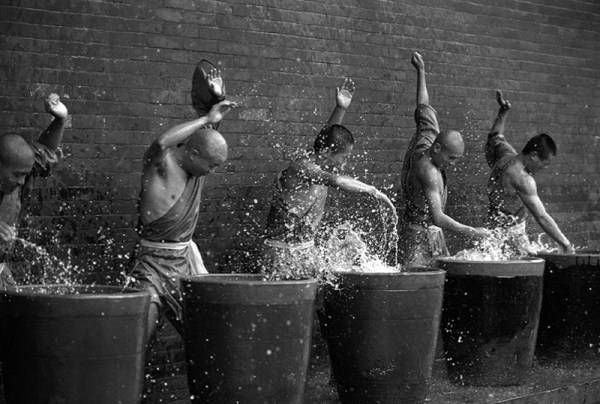Philosophy
Two different perspectives on the Hereafter
60 Minutes recently did a story on the monks and monasteries of Mount Athos in Greece. Mount Athos is a mountain and peninsula in Macedonia, Greece. A World Heritage Site, it is home to 20 Eastern Orthodox monasteries and forms a self-governed monastic state within the sovereignty of the Hellenic Republic. It is an amazing place with huge monasteries and breath-taking landscapes. The architecture is intrinsically beautiful. Art is everywhere.
The Monks live very simple lives: no electricity, telephones, computers or even radios. They work hard making cheese and other foods. They are also artisans and woodworkers, sculptors and artists.
And they mainly pray. They pray all day long, continuously. When asked by the 60 Minutes journalist Bob Simon why they pray so much, the Monks stated they are preparing for the next life after death when they will come face to face with Jesus.
These men give up everything to prepare for death. A death that their faith assures them will be in heaven in communion with Jesus Christ and the Christian God. To them the ultimate reality is not the here and now. But the future, after death.
Mount Athos monastery

Monks of Mount Athos

One of the greatest physicists of the modern world takes a different approach and understanding.
The Guardian
A belief that heaven or an afterlife awaits us is a “fairy story” for people afraid of death, Stephen Hawking has said.
In a dismissal that underlines his firm rejection of religious comforts, Britain’s most eminent scientist who passed away in 2018 said there was nothing beyond the moment when the brain flickers for the final time.
Hawking, who was diagnosed with motor neurone disease at the age of 21, shared his thoughts on death, human purpose and our chance existence in an exclusive interview with the Guardian back in 2013.
The incurable illness was expected to kill Hawking within a few years of its symptoms arising, an outlook that turned the young scientist to Wagner, but ultimately led him to enjoy life more, he has said, despite the cloud hanging over his future.
“I have lived with the prospect of an early death for the last 49 years. I’m not afraid of death, but I’m in no hurry to die. I have so much I want to do first,” he said.

“I regard the brain as a computer which will stop working when its components fail. There is no heaven or afterlife for broken down computers; that is a fairy story for people afraid of the dark,” he added.
Hawking’s latest comments go beyond those laid out in his 2010 book, The Grand Design, in which he asserted that there is no need for a creator to explain the existence of the universe. The book provoked a backlash from some religious leaders, including the chief rabbi, Lord Sacks, who accused Hawking of committing an “elementary fallacy” of logic.
The physicist’s remarks draw a stark line between the use of God as a metaphor and the belief in an omniscient creator whose hands guide the workings of the cosmos.
In his bestselling 1988 book, A Brief History of Time, Hawking drew on the device so beloved of Einstein, when he described what it would mean for scientists to develop a “theory of everything” – a set of equations that described every particle and force in the entire universe. “It would be the ultimate triumph of human reason – for then we should know the mind of God,” he wrote.

The book sold a reported 9 million copies and propelled the physicist to instant stardom. His fame has led to guest roles in The Simpsons, Star Trek: The Next Generation and Red Dwarf. One of his greatest achievements in physics is a theory that describes how black holes emit radiation.
In the interview, Hawking rejected the notion of life beyond death and emphasised the need to fulfil our potential on Earth by making good use of our lives. In answer to a question on how we should live, he said, simply: “We should seek the greatest value of our action.”
In answering another, he wrote of the beauty of science, such as the exquisite double helix of DNA in biology, or the fundamental equations of physics.
Hawking suggested that with modern space-based instruments, such as the European Space Agency’s Planck mission, it may be possible to spot ancient fingerprints in the light left over from the earliest moments of the universe and work out how our own place in space came to be.
So here we are. What should we do?
We should seek the greatest value of our action.
The Monks are preparing for the next life. That is the ultimate and greatest reward for their actions. Stephen Hawking is living in the here and now. The only true reality that we really do experience according to Hawking, the infinite moment as the Zen say. And Hawking is seeking the greatest value of his actions in this immediate moment.
Mandelbrot Fractals: Hunting the Hidden Dimension
It was in January OF 1944 that Benoit Mandelbrot fell in love with geometry, “in its most concrete and sensual form.”
”That part of geometry in which mathematics and the eye meet.”
During a math class, when Mandelbrot was nineteen years of age, at the Lycee du Parc in Lyon, young Benoit realized he could visualize algebra as geometric images. The class professor had been discussing a mathematical problem when Mandelbrot became instantly aware that he had the ability to change algebra into pictures. He then realized that once you can see pictures, the answer to a problem is obvious.
In 1958, Mandelbrot left France and joined IBM in America. It was here that Mandelbrot’s knowledge of visualizing problems was to prove very important.
Engineers at IBM had found an issue with transmitting computer information over telephone lines. Mandelbrot graphed the noise data, and noticed something that surprised him—no matter the time scale the graph looked similar, whether over one day, one hour, or one minute, or one second, the pattern remained constant. This reminded Mandelbrot of the Cantor Set, where a line is broken down into infinite recurring sets, and Helge von Koch’s “Snowflake,” where an iteration of a triangle creates an infinite length. Koch’s “Snowflake” is the earliest form of fractal.
Bringing these elements together, Mandelbrot developed a “theory of roughness” which he used to show that another dimension existed between 2-D and 3-D, this suggested there was a mathematical order to the seeming mess/chaos of the natural world. With the use of IBM computers, Mandelbrot proved his theory by producing a set of fractals in 1979.
Mandelbrot set images are made by sampling complex numbers and determining for each whether the result tends towards infinity when a particular mathematical operation is iterated on it. Treating the real and imaginary parts of each number as image coordinates, pixels are colored according to how rapidly the sequence diverges, if at all. Did you get that?
Woody Allen Life Quotes


Heywood “Woody” Allen (born Allan Stewart Konigsberg; December 1, 1935) is an American filmmaker, writer, actor, comedian, and musician whose career spans more than six decades.
He worked as a comedy writer in the 1950s, writing jokes and scripts for television and publishing several books of short humor pieces. In the early 1960s, Allen began performing as a stand-up comedian, emphasizing monologues rather than traditional jokes. As a comedian, he developed the persona of an insecure, intellectual, fretful nebbish, which he maintains is quite different from his real-life personality. In 2004, Comedy Central ranked Allen in fourth place on a list of the 100 greatest stand-up comedians, while a UK survey ranked Allen as the third greatest comedian.













The Key to Happiness
At least one perspective:

When you are down, Monty Python raises your spirits!
From the Monty Python movie ‘Life of Brian.’
Some things in life are bad
They can really make you mad
Other things just make you swear and curse
When you’re chewing on life’s gristle
Don’t grumble, give a whistle
And this’ll help things turn out for the best
And
Always look on the bright side of life
Always look on the light side of life
If life seems jolly rotten
There’s something you’ve forgotten
And that’s to laugh and smile and dance and sing
When you’re feeling in the dumps
Don’t be silly chumps
Just purse your lips and whistle, that’s the thing
And
Always look on the bright side of life
(Come on)
Always look on the right side of life
For life is quite absurd
And death’s the final word
You must always face the curtain with a bow
Forget about your sin
Give the audience a grin
Enjoy it, it’s your last chance anyhow
So always look on the bright side of death
A just before you draw your terminal breath
Life’s a piece of shit
When you look at it
Life’s a laugh and death’s a joke, it’s true
You’ll see it’s all a show
Keep ’em laughin’ as you go
Just remember that the last laugh is on you
And
Always look on the bright side of life
Always look on the right side of life
(C’mon Brian, cheer up)
Always look on the bright side of life
Always look on the bright side of life
(Worse things happen at sea you know)
Always look on the bright side of life
I mean, what have you got to lose?
You know, you come from nothing
You’re going back to nothing
What have you lost? Nothing
Always look on the right side of life
Nothing will come from nothing, ya know what they say
Cheer up ya old bugga c’mon give us a grin (Always look on the right side of life)
There ya are, see
It’s the end of the film
Incidentally this record’s available in the foyer (Always look on the right side of life)
Some of us got to live as well, you know
(Always look on the right side of life)
Who do you think pays for all this rubbish
(Always look on the right side of life)
They’re not gonna make their money back, you know
I told them, I said to him, Bernie, I said they’ll never make their money back
(Always look on the right side of life)













